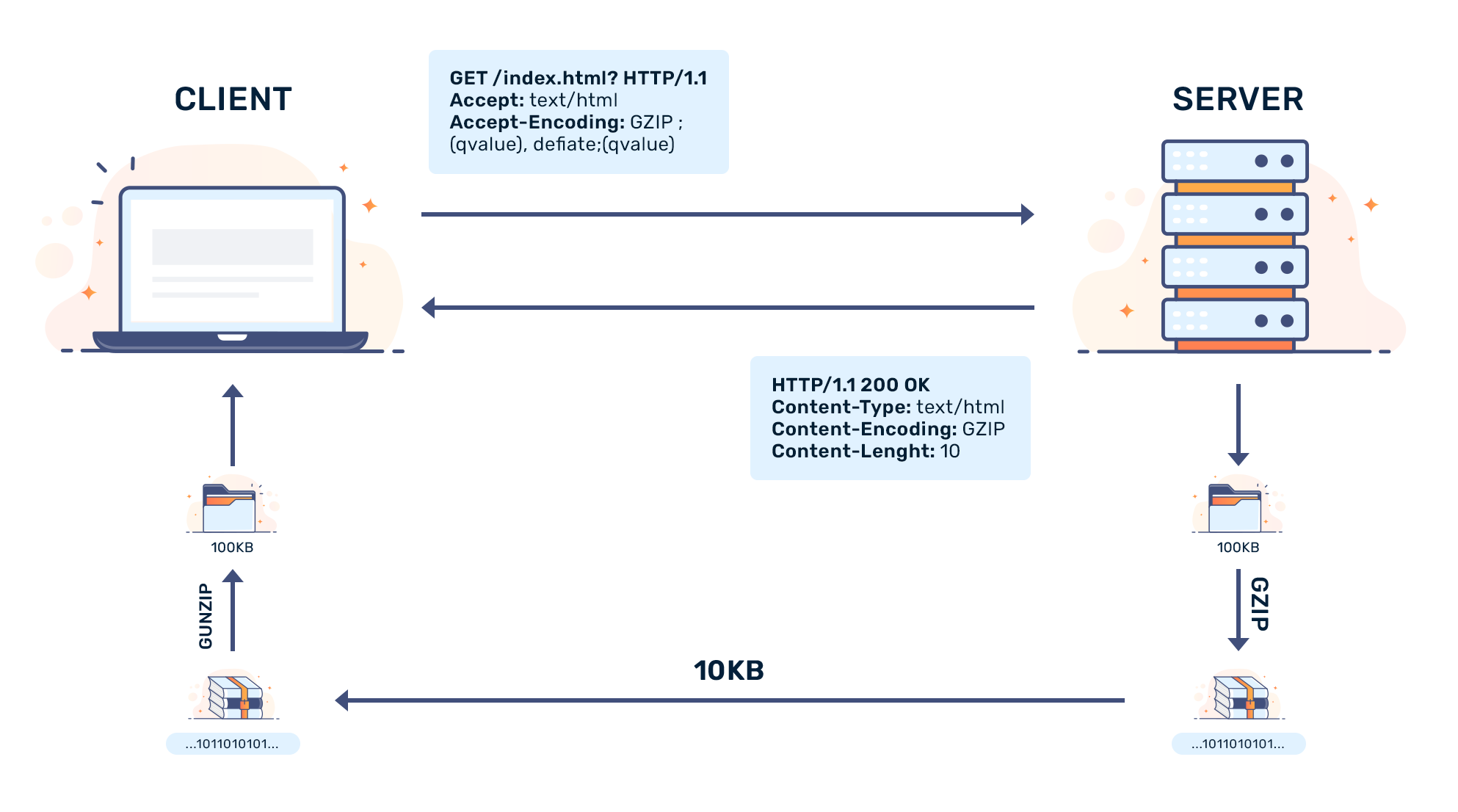HTTP Compression
Introduction
The purpose of HTTP compression is to reduce the size of the files sent by a web server by eliminating redundant information in those files. The smaller the size of the files, the more quickly they can be served over the World Wide Web.
Content such as images and videos are often already processed and stored on a web server in a compressed format. For example, popular compressed image file formats include JPG and PNG, with the newest compressed image file format being WeBP, developed by Google. However, other files for displaying contents on a website are often stored on the web server in an uncompressed format like HTML, CSS and Javascript files.
HTTP compression aims to reduce the size of these files on the server by putting these files through compression algorithms before sending over the compressed versions to a client such as a web browser. When the browser receives the compressed file, it decompresses it quickly using the same compression algorithm before displaying the web page content inside the browser window.
How does HTTP compression work?
Files used to display content on a website, such as HTML, CSS, and Javascript files, contain a lot of text. Due to the nature of these files, their text contains many instances of the same word throughout the document. While all these repeated words are necessary for the web browser to display content correctly, for the purpose of transmission, the repetition is not necessary and is redundant.
HTTP compression removes the redundant information in such files before letting the files leave the web server. The compressed file is smaller and reaches the web browser much more quickly, using less bandwidth too. When the web browser receives the compressed file that has all the redundant information removed, it knows how to decompress the file back to its original, uncompressed state on the web server by replacing the redundant information that was stripped out.
There are different HTTP compression algorithms, such as Gzip, DEFLATE, and Brotli. Brotli is the newest algorithm. Prior to Brotli, Gzip was the more popular option, but Brotli is increasingly preferred because it offers a 20-30% reduction in compression size compared to Gzip with similar decompression speed.

The HTTP compression process
File compression using HTTP compression algorithms has to be performed by the web server. Popular HTTP server software such as Apache and Nginx support most, if not all, compression algorithms out of the box. When requesting content from a web server, your browser can inform the web server through the HTTP request header that it accepts compressed information by including another line like this:
Accept-Encoding: gzip, deflate, br
The request header information above tells the web server that the browser can accept content compressed with either Gzip, DEFLATE, or Brotli.
If HTTP compression is enabled on the web server, the web server will return a compressed version of the requested files. In the HTTP response header back to the browser, the web server informs the browser the type of encoding that has been used like this:
Content-Encoding: br
The response header above tells the browser that the web server has sent back content compressed with the Brotli algorithm. The browser then knows to decompress the content back to its original state using the Brotli algorithm.
The entire compression and decompression process happens very quickly in the background without you noticing.
